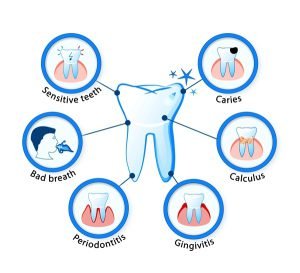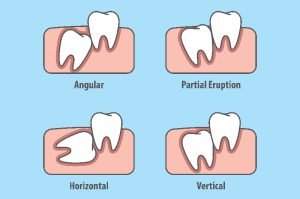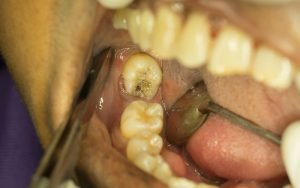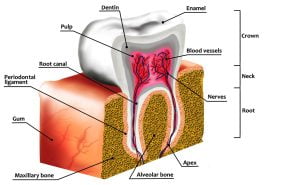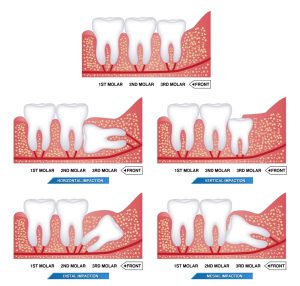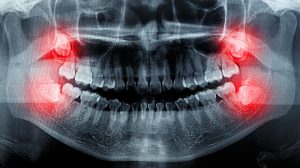Browsing: Impacted Tooth (Tooth Impaction) Graphics
Comprehensive Information, Resources, and Support on Impacted Tooth (Tooth Impaction)
Common tooth disease: Sensitive teeth, caries, calculus, gingivitis, periodontitis and bad breath. Dental diseases are associated with both teeth and gum problems. To prevent these dental problems, the following ways are very essential such as brushing teeth twice a day, routine dental flossing, properly chewing of food, avoiding excess sugar and regular dental check-ups. Good oral hygiene helps to maintain a healthy lifestyle.
Impacted tooth is the permanent tooth which has failed to fully erupt or emerge into its expected position. There are multiple reasons of tooth impaction such as overcrowding, insufficient space, tooth displacement, etc. Impacted tooth can be angular, partially erupted, horizontal, etc and can be detected with the help of dental X-ray. Impaction can cause redness or inflammation in gums, pain while chewing, difficulty in opening the mouth, etc. Extraction is the only treatment during tooth impaction. If the impacted tooth is causing no discomfort, no treatment is recommended.
Horizontal Impaction is considered to be the most painful type of impaction. During horizontal impaction, the molar lies horizontally angled sideways at a full 90 degrees. The horizontal tooth slowly grows into the roots of the molar next and damages the gum and surrounding teeth. When the next molar is pressed against it, pain occurs. After the X-ray, the dentist might suggest an oral surgery to prevent gum infection and other dental problems.
The image shows anatomy of human tooth decay and tooth loss. Tooth decay is the breakdown of teeth due to acids made by bacteria. The bacteria present in the mouth, acid formed by them, food debris left, and the saliva in the mouth combines to form plaque that sticks to the teeth. Presence of acids in plaque dissolves the enamel surface of the teeth and leads to the formation of holes in the teeth which are referred to as cavities. Tooth decay affects, both, the enamel and the dentin layer of the tooth.
Impacted wisdom teeth are third molars or last teeth which are present at the back of the mouth. As they are far back in the mouth, they come out at the wrong angles because there is not enough room for them to emerge or develop normally. These teeth may emerge in different angle (horizontal, vertical, etc) or may even partially emerge and cause discomfort Impacted tooth may press against other teeth and cause problems. Several dental problems such as cavities, gum infection, cysts formation, etc develop due to tooth impaction.
If the third molars cause some discomfort, the doctor suggest dental X-rays. For dental problems, panoramic dental x-ray is recommended at it uses a very small dose of ionizing radiation to capture the entire mouth in one image. Dental X-rays are performed by dentists and oral surgeons and are very useful to plan treatment for dentures, braces, extractions and implants. In cases of impacted tooth, bite-wing X-rays are extremely helpful as they highlight the crowns of the back teeth. This is beneficial in showing the upper and lower molars (back teeth) and bicuspids (teeth in front of the molars).
ADVERTISEMENT




